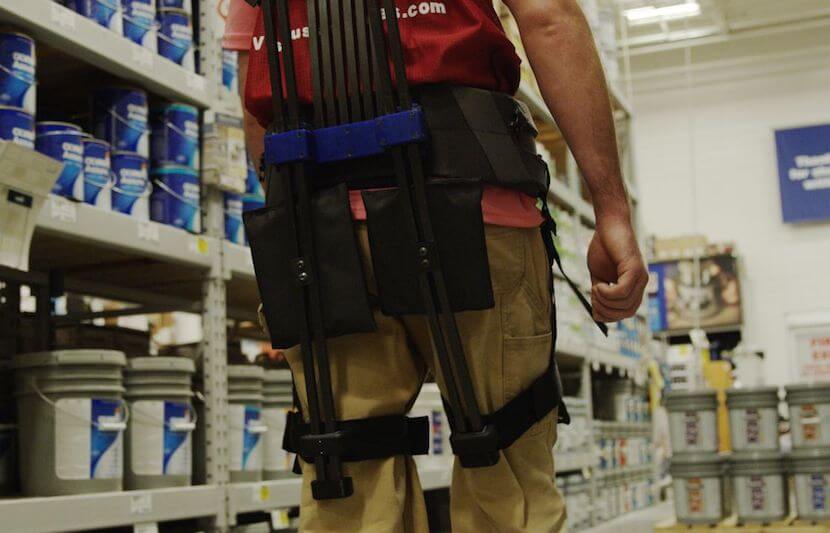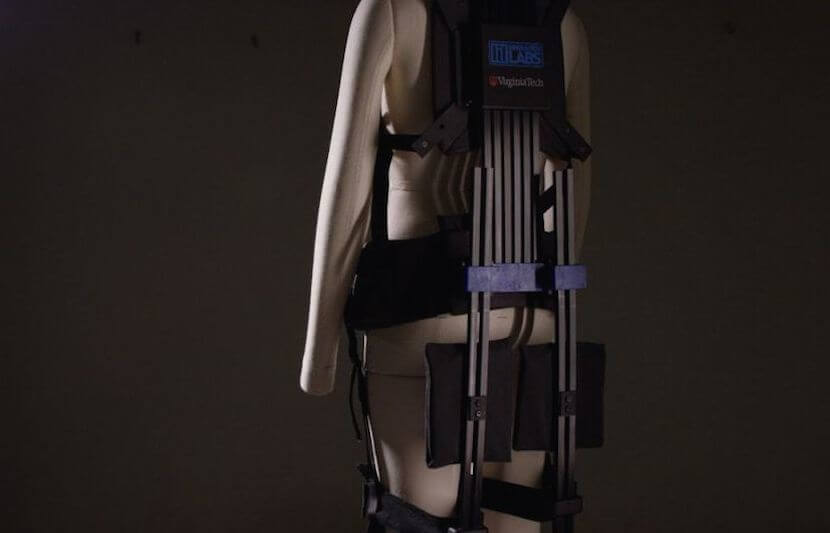A team at Virginia Tech and members of Lowe’s Innovation Labs joined forces to create an exosuit to help Lowe’s employees lift and carry large and heavy objects throughout the day. The suit is an exoskeleton made with a flexible carbon-fiber back with lift-assist technology that can twist and bend with natural human motion.
Alan Asbeck, robotics expert and professor for the Department of Mechanical Engineering at Virginia Tech, brought together a team of graduate and undergraduate students to assist Lowe’s Innovation Lab, the company’s technology hub, in designing the exosuit prototype. “We used textiles as a human interface to make the suit comfortable and conformal, as well as, being flexible,” Asbeck said in a statement.
The suit is currently being tested by employees at a Lowe’s in Christiansburg, Virginia. The exosuit was made to limit fatigue for warehouse workers, but is also used to prevent injury. Kyle Nel, the executive director of Lowe’s Innovation Labs, helped Asbeck construct the exosuit with the health and safety of his store associates in mind, but he has bigger dreams for the potential of the exosuit. “This exosuit is the first step. Exosuits are the future,” Nel said in a statement. “We will have better form factors, more amazing powers to make this superpower even better.”

While built for a specific purpose, the exosuit has the potential to develop into much more. The next focus is to develop this technology to aid in medical rehabilitation.
Asbeck was awarded with a 135,000 dollar grant from the National Institute of Health’s (NIH) Interdisciplinary Rehabilitation Engineering Career Development Program, which, he explained to TUN, is a training grant. “The NIH grant is primarily a training grant — allowing me to learn more about the current problems in rehabilitation and giving me training on how to develop systems and write grants to help with rehabilitation,” said Asbeck.
The exosuit could also be potentially used in the defense industry. Before Asbeck was funded by the NIH, his studies were financed by the Defense Advanced Research Projects Agency. He was asked to construct a suit to aid soldiers’ motion.
Asbeck told TUN that he and his team plan to keep the exosuit used at Lowe’s separate from potential exoskeletons used for rehabilitation.
We do intend to further develop the current exosuit, but most likely it will not be used for rehabilitation. Instead, we are developing other systems for both the upper and lower body with a focus on rehabilitation.
The modest NIH grant will allow Asbeck to further his research and planning for the prototype, but there are still many questions left unanswered. “I would like to research better mechanical systems that can be worn, that are extremely lightweight and flexible; better control systems so the wearable robots can work with their wearers more intelligently; and would like to do a lot of experiments to understand the best ways to help people regain function after an injury,” Asbeck said.
Asbeck has a team of students at Virginia Tech to help him reach the full potential of the exosuit. They conduct calculations, evaluations of prototype, and manufacture the current prototype.
The possibilities for the exosuit are endless, and the benefits will be very rewarding. “My personal end goal is to make devices that work well enough and are simple enough that they can be mass-produced and used by people in the real world. This partnership with Lowe’s is an excellent opportunity to do that!” said Asbeck.



